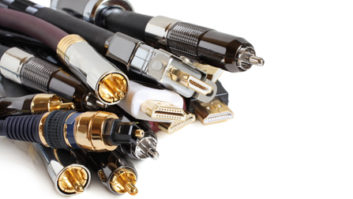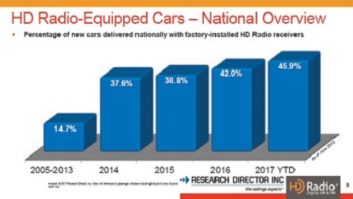LOS ANGELES — An STL system is just as crucial in a radio station’s air-chain as the transmitter or antenna. After all, if there’s no audio to transmit, then even the best transmitters and antennas are of little use. No one tunes in to hear dead air.
Every radio station should have, at minimum, two ways to get program audio to the transmitter site. A radio STL at 950 MHz is a good option for one of the two means. “Wireline” of some sort is a good choice as well. (By wireline, I mean any type of connectivity provided by the local exchange carrier—whether audio circuits, T1s, or metro Ethernet.) Technology diversity is the best way build redundancy in to your STL system. Your primary and auxiliary STLs should not both be of the same type; if you use “wireline” for the main, use radio for the aux, and vice-versa.

Let’s take a look at the reasons for this assertion of mine.
PROBLEMS WITH RADIO LINKS
While private radio links make great STLs they are subject to problems, including these:
- Outright equipment failure
- Antenna/transmission line failure
- Interference that just shows up one day
- Deep fades
Let’s talk about the mitigation of these issues one at a time.
Equipment failure. This is the most likely means by which you will “lose” your STL. Clearly the best way to get around this is to have a standby transmitter, and a standby receiver, both of which can be switched ON using remote access. The receiver part is easy—derive two separate antenna feeds, drive the input of both receivers, and then put a switch on the outputs so that either can feed your air-chain. The transmit side is a bit more difficult—since they both can’t be radiating at the same time. The most practical approach is to use an RF switch to select the output of one of the two transmitters to drive the transmit antenna. Another (better) approach is to have separate transmit antennas. No RF switch is necessary then, but you’ll still need a way to turn one transmitter ON and have the other OFF, and the ability to reverse their roles.
[Related — “Best Practices: Value Engineering“]
Antenna and/or transmission line failures. Another way radio STLs fail is by way of bad connections on transmission lines and antennas. Often they sit out in the weather for years, and if they were not installed correctly to begin with, problems can show up several years down the road.
If you have two receivers, ideally they can be fed by separate antennas; that way, a failure in the receive antenna system won’t leave you with two non-working receivers. Separate feeds are best, even if one is from an inferior antenna.
Likewise, on the transmit side, having a choice of antennas provides an advantage. Even if you have two transmitters, having a bad transmit antenna will leave you with little prospects. This type of problem often shows up at the worst time as well—say for example in the winter—so getting someone out to fix it might not be as easy.
New interference. 950 MHz-band resources are typically shared amongst multiple users in a market. The unfortunate reality is that a radio system that is working fine one day can sometimes be interfered with the next, leaving you scratching your head. New systems come up (though you should know about any of them through the Prior Coordination Notification protocols) and create problems unexpectedly; a random transmitter in the field might develop spurious emissions that accidentally show up on your channel; and there’s always the possibility of newly developed intermodulation products at the receive site. If you are using a digital system, there’s also the possibility of desensitization of your receiver, because of strong, local carriers that are nowhere near your own frequency.
These types of problems are rarely solved in a day and the best way to be prepared is by having one or two other means by which program gets to the transmitter site.
[Related — “Best Practices: Krone Blocks“]
Deep fades. If a path is poorly designed, or if it has other problems, none of which had come to your attention previously, you might experience signal fades on the path that are deep enough to make your receiver “mute” causing dead air. When you first start at a station you should take note of RSSI levels on the receiver(s) and also forward and reflected power readings on the transmitter(s). Sometimes transmission line problems can make the signal weak at the far end (though still receivable) while not knocking it all the way out (i.e., fade margin is unexpectedly used up). Antennas that are not aligned properly can cause similar problems.
Radio plus wireline strategy. So, to reiterate my earlier assertion, technology diversity is the best way build redundancy in to your STL system. There’s simple logic behind this idea.
While there are four primary ways to have a radio system knocked out (see above) none of them is related to the performance of “wireline.” If you experience any of the four you can switch over the wireline and keep going while you figure out your radio problems.
Conversely, wireline problems, when they happen, will be totally unrelated to any 950 MHz system performance. Wireline issues would include fiber cuts, power outages, and other miscellaneous central office equipment failures.
One exception I will point out is the use of part 101 radio systems. It would be acceptable to use 950 MHz and 11 GHz radio systems as main and auxiliaries.












